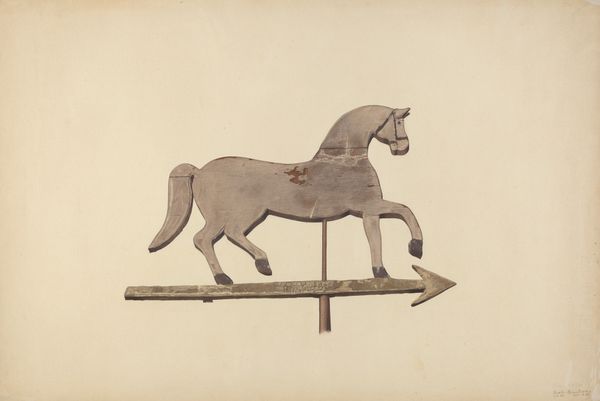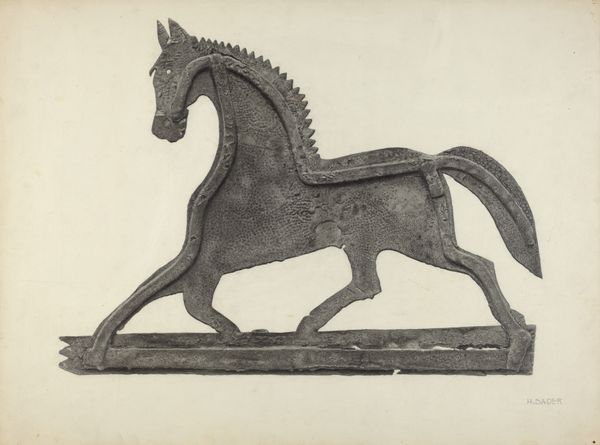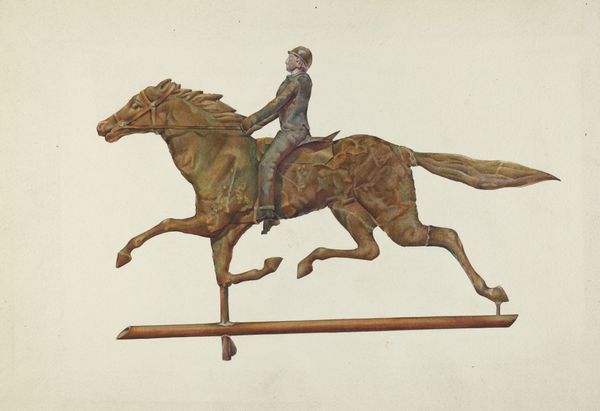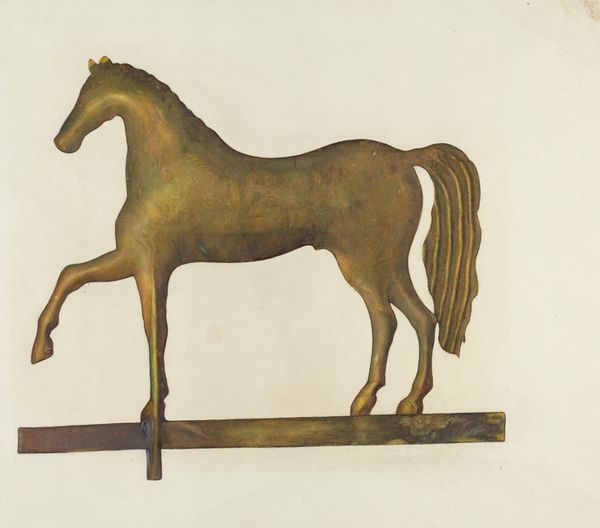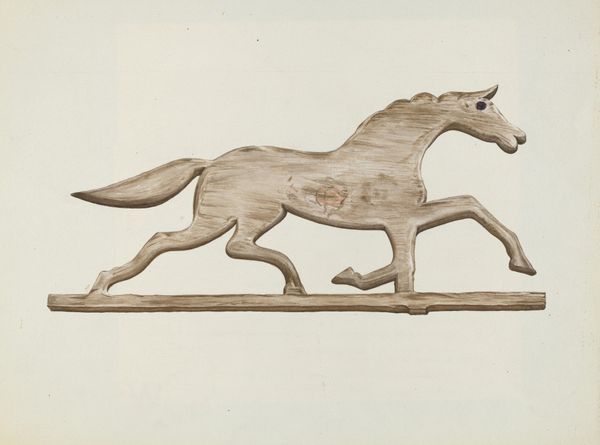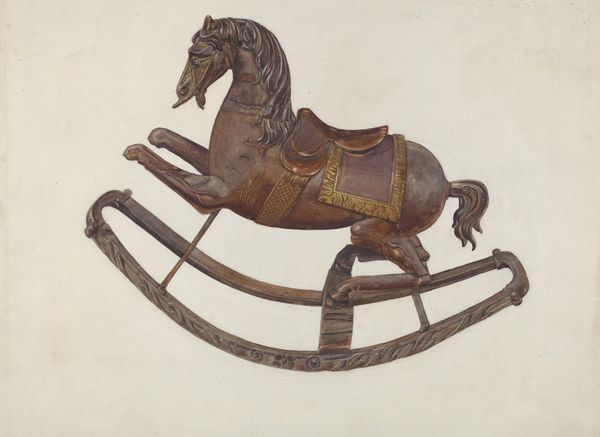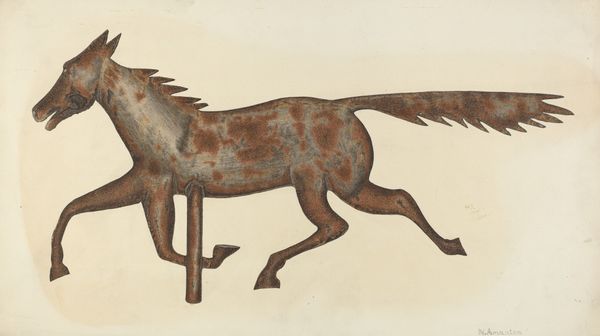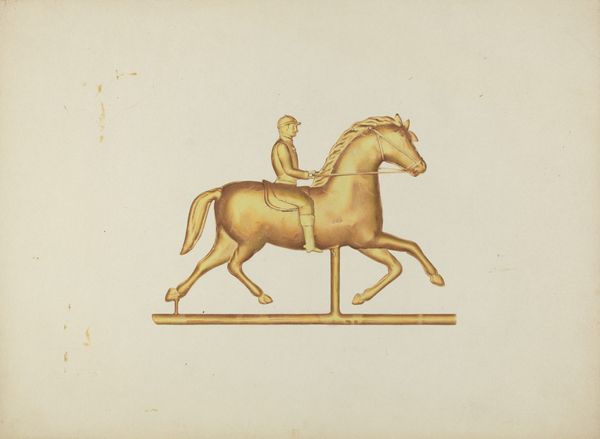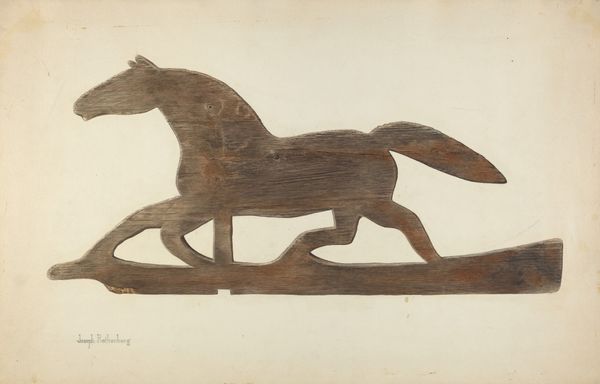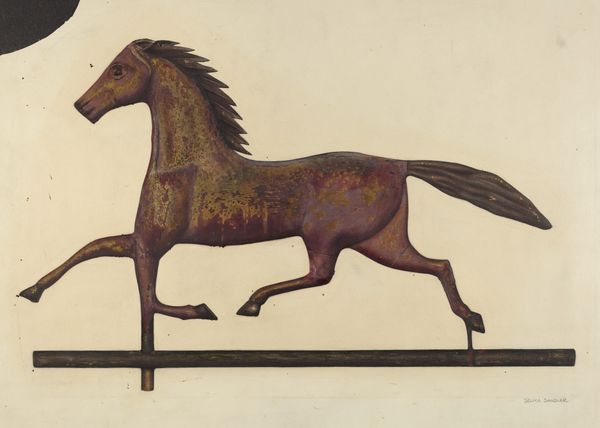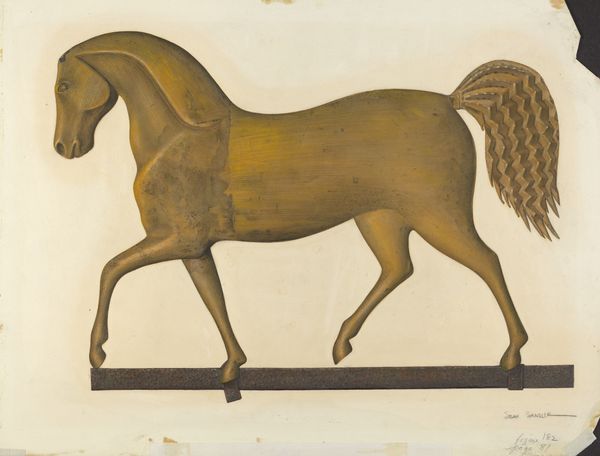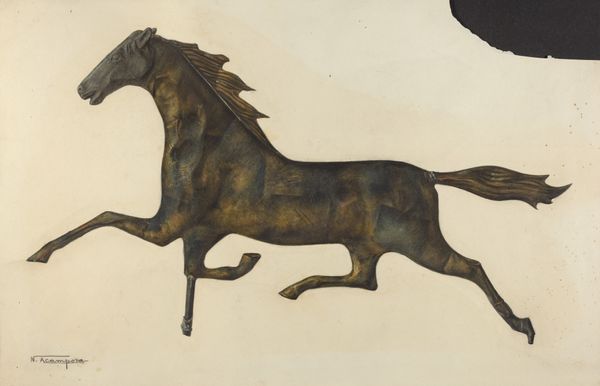
drawing, watercolor
#
drawing
#
landscape
#
charcoal drawing
#
oil painting
#
watercolor
#
coloured pencil
#
folk-art
#
watercolour illustration
#
watercolor
Dimensions: overall: 26.5 x 37.4 cm (10 7/16 x 14 3/4 in.)
Copyright: National Gallery of Art: CC0 1.0
Editor: Here we have Helen D. Bashian's "Weather Vane," made around 1937. The use of watercolour gives it a kind of rustic, almost nostalgic feel, like a faded memory. What's your interpretation of this piece? Curator: The apparent simplicity is deceiving. Bashian's choice to depict a weather vane—traditionally a symbol of guidance and direction—during the late 1930s invites a conversation about the social and political turbulence of the era. The folk-art style anchors it within a specific cultural context. Editor: So, it's not just a charming horse, but a reflection of broader anxieties? Curator: Precisely. Think about it: the Great Depression, the looming threat of war… the horse, frozen mid-stride, becomes a metaphor for a nation caught between movement and stagnation. What does the weather vane signify to you in relation to folk art? Editor: I hadn’t considered that! The idea of folk art representing tradition and the weather vane signifying change... maybe it is about the tension between holding onto the past and facing an uncertain future. Curator: Exactly! And the choice of materials—watercolor, which is transparent and often associated with fleeting impressions—reinforces this sense of transience and vulnerability. This invites questions about our relationship to history and how we navigate periods of societal change. Editor: I see how it is relevant even now, given everything going on. That’s much deeper than what I originally thought! Curator: It reveals the importance of considering an artist's place in history and how artworks can reflect and refract broader social narratives. Looking at art through that kind of intersectional lens brings new perspectives. Editor: Absolutely, I will consider the historical context from now on. Thanks!
Comments
No comments
Be the first to comment and join the conversation on the ultimate creative platform.
